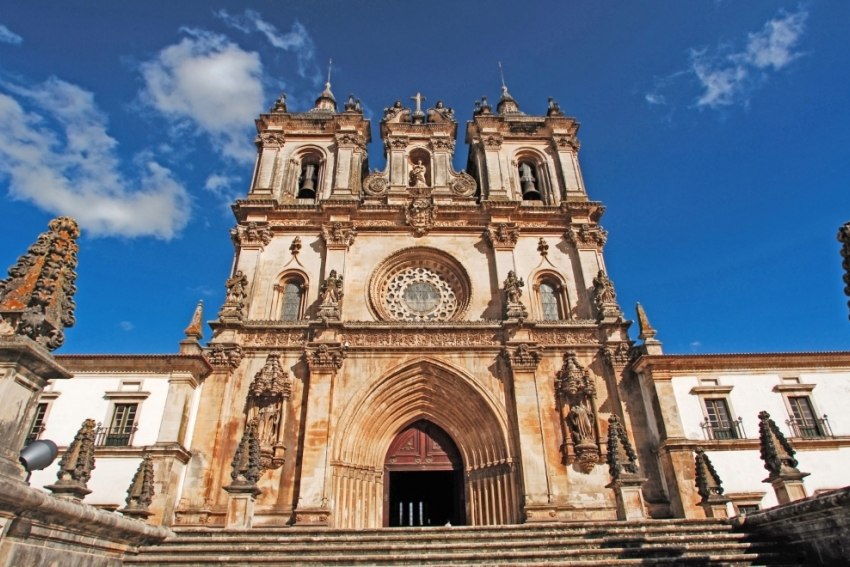Come to be a part of history
25/06/2015
Some of the major historical places and museums in Portugal have now easier access to meetings and events. The growing number of applications has led the Portuguese government to prepare the Order nr 8356 / 2014, that regulates access, creates a set of guiding rules and indicates the values in question.
Historical places
Casa Museu Dr. Anastácio Gonçalves . Lisbon
www.cmag.imc-ip.pt/Default.aspx?PageId=1&Lang=en-GB

Convento de Cristo . Tomar
This magnificent complex is directly connected to the Knights Templar and the Order of Christ that succeeded them. The Convent somehow symbolizes the European Crusades and the medieval world. The Templars chapel is, moreover, one of the only remaining examples. In 1312, the Order of the Knights Templar is abolished by Pope Clement V. The Portuguese King D. Dinis does not accept orders from the Pope and creates the Order of Christ, with the Templars and their previous possessions. The Manueline window is another of the symbols of this space, as a symbol of the Portuguese expansion beyond its borders.
www.conventocristo.pt/en
Mosteiro de Santa Maria da Vitória . Batalha
To thank for the victory in the Battle of Aljubarrota (1385), and in fulfillment of a promise, King João I orders the construction of the Monastery of Batalha. The victory in Aljubarrota was decisive for him to secure the throne and for Portugal to maintain its independence. The works continued for over 150 years. Here lie for eternity the referred king and his family, including Prince Henrique, the Navigator, one of the main faces of the Portuguese Discoveries. The Monastery of Batalha is a world heritage site since 1983.
www.mosteirobatalha.pt/en

Mosteiro de Alcobaça . Alcobaça
The construction of the Alcobaça Monastery began in 1178, being the first example of Gothic architecture to be built in Portugal. In the fourteenth century, the tombs of King Pedro I and Queen Inês de Castro were moved here. They were the protagonists of one of the most beautiful and tragic love stories to be perpetuated in Portuguese literature. It is a world heritage site.
www.mosteiroalcobaca.pt/en
Mosteiro dos Jerónimos . Lisbon
The Jeronimos Monastery is one of the iconic monuments of the capital. It was built by King Manuel I. The work began in 1501. In the church are buried Vasco da Gama, discoverer of the sea route to India, and Luís Vaz de Camões, the greatest Portuguese poet, author of The Lusiads. It is considered world heritage by UNESCO.
www.mosteirojeronimos.pt/en
Museu da Música . Lisbon
www.museudamusica.pt/index.php?lang=en
Museu de Arte Popular . Lisbon
www.map.imc?ip.pt
Museu Nacional de Arte Contemporânea do Chiado . Lisbon
www.museuartecontemporanea.pt/en
Museu de Grão Vasco . Viseu
www.patrimoniocultural.pt/en/museus?e?monumentos/rede?portuguesa/m/museu?grao?vasco
Museu Monográfico de Conimbriga . Condeixa-a-Nova
www.conimbriga.pt/index_en.html
Museu Nacional de Arqueologia . Lisbon
www.museuarqueologia.pt/?a=0&x=2
Credits: © PAULO VALDIVIESO
Museu Nacional de Arte Antiga . Lisbon
The museum is located at Palácio Alvor?Pombal, built in the seventeenth century by Francisco de Távora, Count of Alvor. The museum itself dates from 1884. Its possessions include one of the masterpieces of Portuguese painting of the fifteenth century, the Saint Vincent Panels, which portray the nobility, clergy and people of the period before the Discoveries.
www.museudearteantiga.pt
Museu Nacional de Etnologia . Lisbon
http://mnetnologia.wordpress.com/in?english
Museu Nacional do Azulejo . Lisbon
www.museudoazulejo.pt/en-gb/default.aspx
Museu Nacional do Teatro . Lisbon
www.museudoteatro.pt/en?gb/default.aspx
Museu Nacional do Traje . Lisbon
http://www.museudotraje.pt/en-gb/default.aspx
Museu Nacional dos Coches . Lisbon
http://en.museudoscoches.pt
Museu Nacional de Machado Castro . Coimbra
www.museumachadocastro.pt/en?gb/default.aspx
Museu Nacional de Soares dos Reis . Porto
www.museusoaresdosreis.pt/en?gb/default.aspx

Credits: © PAULO VALDIVIESO
Palácio Nacional da Ajuda . Lisbon
It was initially set to be built in wood at the top of a hill by King José I (1714-1777) to be able to withstand earthquakes, as the one that destroyed part of the Portuguese capital in 1755. It became known as the Royal Tent. Later, after a fire, it was projected in bricks and mortar (1796). But for various reasons the work was being discontinued. In 1821, the palace remained unfinished, although with habitable parts. With King Luís, this palace gains a new dimension, being chosen as the official residence of the court. Today, it holds some of the main state protocol ceremonies.
www.palacioajuda.pt/en?gb/default.aspx

Palácio Nacional de Mafra . Mafra
It is the monument that Nobel Prize in Literature José Saramago tells us about in this book "Baltasar & Blimunda". It was in the south tower of the palace as the last king of Portugal, Manuel II, spent his last night in the kingdom, from 4th to 5th October 1910, before leaving for exile. The library of the Palace is one of the most spectacular in the country, with a collection of 36,000 titles.
www.palaciomafra.pt/en?gb/default.aspx
Panteão Nacional . Lisbon
www.patrimoniocultural.pt/en/museus?e?monumentos/dgpc/m/ panteao?nacional
Torre de Belém . Lisbon
It was built by King Manuel I in 1514, with defensive functions. The architect for the project was Francisco de Arruda. It is a world heritage site and one of the most recognizable images of Portugal abroad.
www.torrebelem.pt/en



